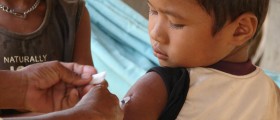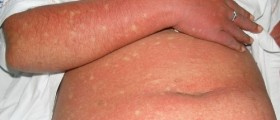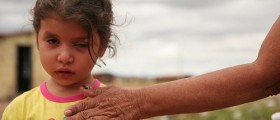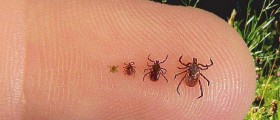
Leprosy, also known as Hansen's disease, is a condition which was bothering the human kind since time immemorial, getting worse during specific times of the human existence throughout history. If you are interested in this disease and its historical development and the impact it had, and still has, on the human race, read on.
Definition
Leprosy is defined as a contagious disease which affects the skin, mucous membranes and nerves, leading to lumps and discoloration of the skin, in severe cases including serious physical deformities. Today, the world is mostly free from this disease, even though it still can still be seen in some parts of Africa and Asia.
Leprosy was first noticed by G.H. Armauer Hansen in Norway in 1873, since he was the first person to identify the microorganism behind this condition – the mycobacterium leprae. In fact, this bacterium is considered to be the first ever proved to be related with human diseases.
As far as the name for this disease is concerned, it is derived from a Greek word “lepra” which stands for disease which makes the skin scaly. Later on, the word reached the Latin and the Old French language, spreading throughout the world.
According to discoveries related to an exhumation of a body of a man who lived in the Old City of Jerusalem, this person was the first man ever to suffer from leprosy, since traces of the disease were found in his DNA.
History of Leprosy in Europe
As far as Europe is concerned, in the 17th century, the only parts of it affected by leprosy were Norway and Iceland where, during the 1830s, the numbers of affected people escalated, making it a political issue. Thus, the first ever health institution for people suffering from leprosy was established in Norway in 1854, along with a patient register for this disease.
People suffering from Hansen's disease were usually referred to as lepers throughout history, facing a significantly powerful stigmatization they desired to avoid.
As far as some ancient sources of knowledge regarding leprosy are concerned, even the Bible, in the story of Syrian Naaman contained descriptions of this health condition, torturing the captain of the host of the king of Syria.
At the end of the 17th century, once leprosy has managed to get more and more notorious throughout the world, many fungal infections and other conditions with similar symptoms were mistaken for it. Thus, we cannot completely rely on historical data dating before the middle of the 19th century, since this is the time when microscopic examination of the skin was initially developed.
Yet, in Ancient Rome, leprosy is through to have been present, referred to as “elephantiasis” in the descriptions made by Aulus Cornelius Celsus during the time between 25 BC and 27 AD.
Furthermore, "The leprose" by Albrecht Dürer, created in 1513 tells us a different story, claiming that during this time there were numerous leper hospitals found across Europe. In fact, this source notes that there were more than 19,000 of these facilities, with the first leper colonies being created in Harbledown. In those times, people suffering from leprosy were often described as those who are going through purgatory on Earth, being considered as beings facing divine suffering. Nevertheless, there were some people who considered lepers to be individuals who were existing between life and death, stigmatizing them as obscure.
History of Leprosy in Asia
The Hindu religious books and notes gave descriptions and possible treatments for leprosy in the 6th century BC, according to Encyclopedia Britannica. Some other sources claim that therapeutic suggestions for treating this illness were found in Asian documents dating back to 600 BC. Yet, the first document bearing witness of leprosy in Asia is considered to be the one made by the Galen of Pergamum in 150 AD.
As for other signs of leprosy in this part of the world, in 2009, a skeleton was found in India, claimed to be about 4,000 years old, showing traces of leprosy. Before this skeleton was discovered, the first leprous corpse was thought to originate in Egypt, thought to have lived in the 6th century.
According to scientific data, in 1881 about 120,000 people were suffering from this disease in India and these individuals were legally kept away from healthy people since the year 1898.
In China, the first signs of leprosy were described in a bamboo slip dating from the 3rd century BC. On the other hand Japan has documents depicting leprosy written in 883, where the symptoms and the nature of leprosy were described, according to the medical knowledge of these times.
Today, the world is thought to contain at least 3 million people suffering from leprosy. Most of these Individuals live in India, even though Brazil and Burma are places where a vast number of affected people live too.
While the numbers of world-wide presence of this disease were about 640,000 in 1999, the numbers grew to 738,284 in 2000, with India containing more than 50% of all people affected by leprosy.
As for the US, in 2005 a survey carried out by the Centers for Disease Control and Prevention reported that 166 new cases of leprosy were found in California, Louisiana, Massachusetts, Texas and New York.
All in all, leprosy is still a world-wide problem, even though its occurrence has significantly decreased since the 17th and the 18th century.

















Your thoughts on this
Loading...